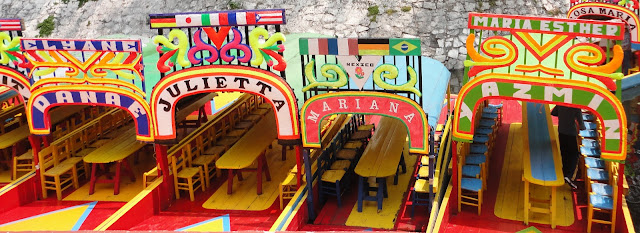Strange as it may seem, Christ Church's biggest attendance of the year is on the Sunday nearest to Remembrance Day, which in the US in known as "Veterans Day." I don't remember much about Veterans Day, and I don't know if it still is a school or bank or federal holiday. Mostly, it's an excuse for retailers to have a Veterans Days sale, and other than a few people who are active in VFW Posts, it is mostly a forgotten observance.
Not here. Because the influence of the British expatriate community is so strong here, those holidays and observances that are important in the UK are still important here. And Remembrance Day is big in the UK, and, I imagine, throughout all of Europe. Of course the two world wars were fought there on their soil, so the memories are still strong, and the veterans and their families and descendants still remember and hold dear the sacrifices that were made for homeland. And so Christ Church in Mexico City has a British-style Remembrance Day Observance on the Sunday closest to November 11, which this year was on the day itself.
 |
| St. Patrick's Battalion of Pipes and drums, with flag bearers in the background. |
 |
| Christ Church Choir and clergy |
The guest preacher was the Rev. Canon John White, retired from Windsor Chapel (as in Windsor Castle, which is one of the official residences of the queen). Canon White has come for this event every year for approximately the last eighteen years.
 |
| The Rector and clergy of Christ Church with the Rev. John White (second from right) |
The Remembrance Day observance takes place immediately after church on the church patio where the names of the fallen are inscribed on a series of plaques affixed to the walls of the parish house. The names of those who died in the two world wars are read, including the names of those in the Mexican Air Force Squadron who fought alongside US airmen. This is an aspect of US history that I knew nothing about until I moved down here, but the Aztec Eagles as they came to be known, fought bravely and provided a valuable service to the allied military forces. So they are remembered along with the US and British soldiers.
The Ambassador of the UK also gave a brief address. I found her words rather brave, as one of the thoughts she reflected her point of view as a diplomat that war represents a failure of diplomacy.
 |
| H.E. Judith MacGregor, Ambassador of the United Kingdom to Mexico |
After the address, the wreath laying ceremony followed, and the ambassadors (or their representatives) placed their tributes beneath the plaques.
 |
| A member of Christ Church and veteran of World War II lays a memorial wreath of poppies. |
Other organizations also their tributes, including some of the schools, the British Benevolent Society, and other international organizations. The service followed the traditional order of many years, and included the minute of silence, one of the bagpipers playing the Piper's Lament, and a trumpeter concluding with Reveille.
Of course there was a lavish reception (also part of the tradition!) which included not only coffee and tea, but also whiskey, beer, and wine.
Remembrance Day was, indeed, a day to remember.
 |
| The official picture of Remembrance Day includes the clergy, the Ambassadors, the Veterans, the Pipe Band, and the Color Guard, |












































